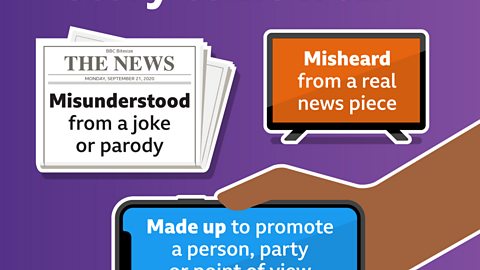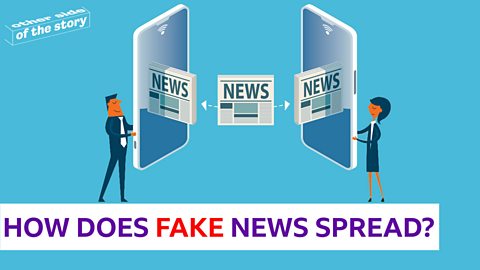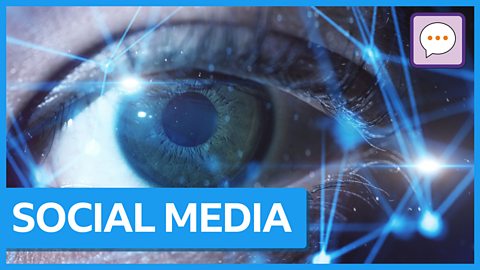Fake stories aren’t just disguised in articles or headlines. Pieces of false information can be hidden in pictures, videos and memes posted online – which are not what we would traditionally call ‘news’!
And because the internet is made up of lots of different types of media, it’s easy to see how a made-up fact can spread around really quickly. This also means that the original source of false information is hard to find among all the posts and shares.
But how exactly does a fake story go from one dodgy source in the corner of the internet to being shared on your family WhatsApp group and appearing on your feed?
Click through the step-by-step slideshow to see how false information might spread

Image caption, Where could a fake story come from?
There are several ways that false information might come to life.
1 of 6
Where could it have come from?
Fake news could start as disinformation (things deliberately made up for a specific purpose) or end up being misinformation (false content shared accidentally by people who don’t know that the information is inaccurate).
It might have been:
- misheard or misquoted from a real news piece
- made up to make money or clicks for a website
- designed to promote a person, party or point of view
- misunderstood from a joke or parody post and taken as a fact.
If this information matches our own beliefs, we’re more likely to take it as a fact because of confirmation bias. And even if it’s not something we would normally believe, the shocking nature of the content might play on our emotions and get us to share it.
How does the sharing start?
Sharing usually starts in small, trusted networks before going on to be widely seen across the internet. These might be groups on messaging apps like a family chat, or social media pages and groups full of like-minded members.
We all trust our family and friends, so when they send something on to us that might contain false information, we’re more likely to believe them – and then in turn share it with others that we trust too. Imagine a web of contacts slowly getting larger as fake news is passed between different trusted networks; that’s how the sharing starts.

Sometimes this process is helped by bots (fake accounts programmed to spread a story to as many people as possible) and trolls (real accounts who like to harass and intimidate other people online), who aim to push fake news onto lots of social media timelines. They might do this for money, political gain, or even just for fun.
When does it go viral?
If false information catches the eye of accounts who have large followings and they decide to share it too, it could be seen by lots and lots of people.
A recent study by the University of Oxford’s Reuters Institute found that even though only 20% of fake news stories were produced or shared by famous public figures, these posts made up nearly 70% of the total engagements on social media. These “super-spreaders” can easily amplify false information online, which their followers are likely to trust as they look up to them.

But you don’t have to be famous to be a super-spreader. Often, false information can flare up just as quickly through friends and family connections.
Think about what would happen if the most popular person in school supported a fake news story, or if an aunt or uncle shared a meme with made-up information in all the family group chats.

At this point, the false information might only be a small step away from being published as a fact on another website. Some news sites are so keen to get the latest scoop that they could rush into publishing it just because it’s popular. Some websites will look like news sites, but in reality are only run by one or two people as a blog.
Remember that not everything is what it looks like on the outside. It’s important to note that trusted news sources will always fact-check and verify before reporting new stories.
What can we do?
As the spread of false information can quickly spiral out of control, remember to pause before you share – whether it’s a headline, image, screenshot, video or meme.
If you think that you have managed to spot fake news online, most social media platforms have a feature to report posts and send feedback to their content moderators.
The seven types of people who start and spread viral misinformation
Conspiracy theories and speculation about coronavirus have flooded social media. But who starts these rumours? And who spreads them?

How does fake news spread?
Vick Hope finds out how fake news plays on our emotions and why we should pause before we share.

How algorithms and filter bubbles decide what we see on social media
Find out how fake news can often be spread more easily in a filtered social media feed.

Fact or Fake?
Find out how to spot and stop fake news with BBC Bitesize.
